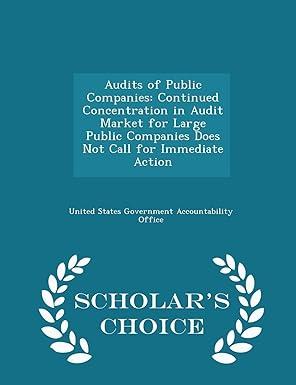General Journal 1) Sold gift cards totaling $10,800. The cards are redeemable fireworks set-up services within one year of the purchase date. 2)Purchase additional inventory
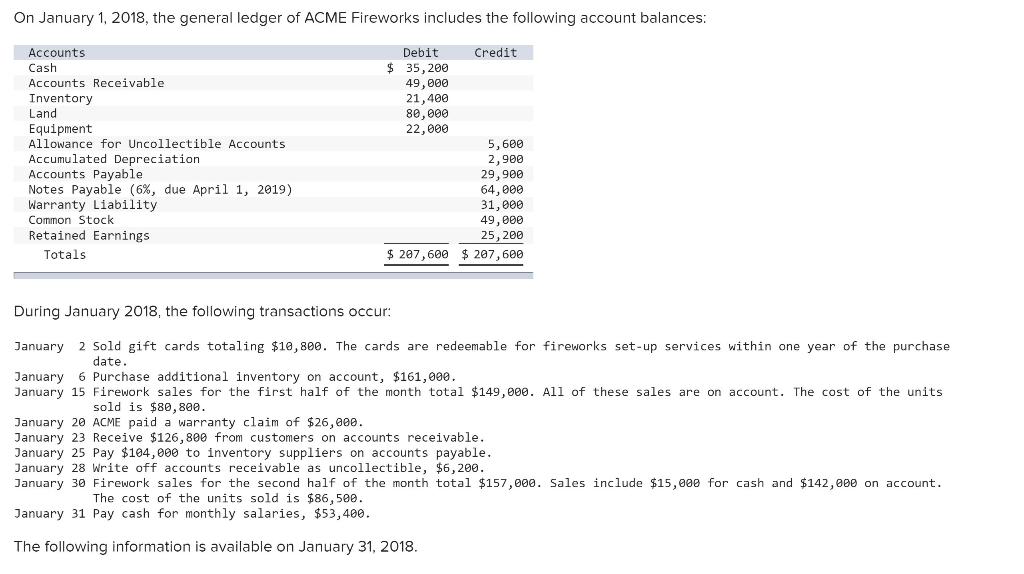
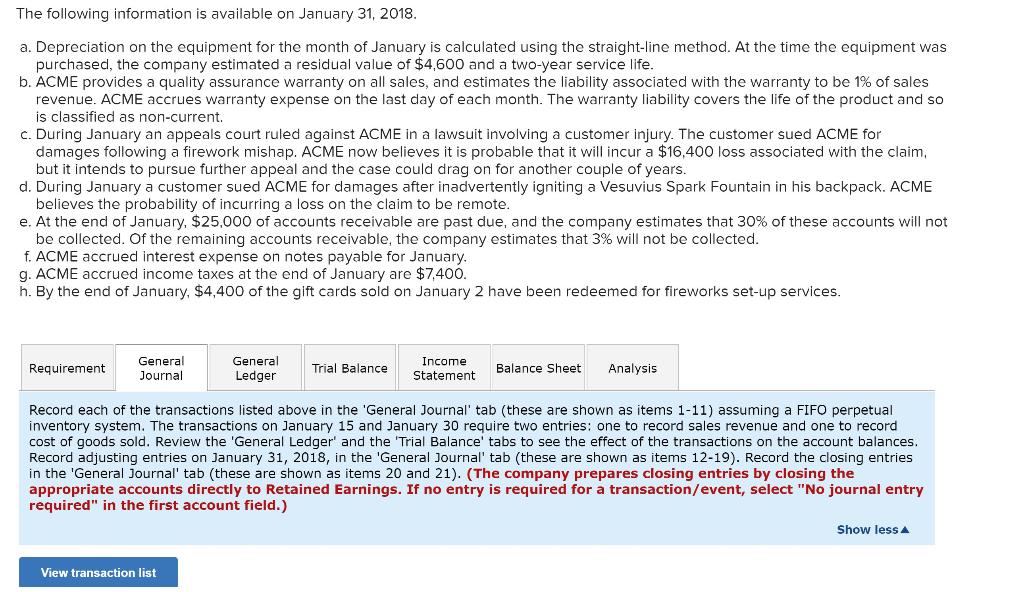
General Journal
1) Sold gift cards totaling $10,800. The cards are redeemable fireworks set-up services within one year of the purchase date.
2)Purchase additional inventory on account, $161,000.
3) Firework sales for the first half of the month total $149,000. All of these sales are on account.
4) The cost of the units sold is $80,800.
5) Record the entry for cash paid to satisfy warranty claims, $26,000.
6) Receive $126,800 from customers on accounts receivable.
7) Pay $104,000 to inventory suppliers on accounts payable.
8) Write off accounts receivable as uncollectible, $6,200.
9) Firework sales for the second half of the month total $157,000. Sales include $15,000 for cash and $142,000 on account.
10) The cost of the units sold is $86,500.
11) Pay cash for monthly salaries, $53,400.
12) Record the adjusting entry for depreciation.
13) Record the adjusting entry for estimated warranty cost.
14) record the adjusting entry for estimated litigation cost.
15) Record the adjusting entry for probability of loss is remote.
16) Record the adjusting entry for uncollectible accounts.
17) Record the adjusting entry for interest.
18) Record the adjusting entry for income tax.
19) Record the adjusting entry for revenue earned.
20) Record the closing entry for revenue.
21) Record the closing entry for expenses.
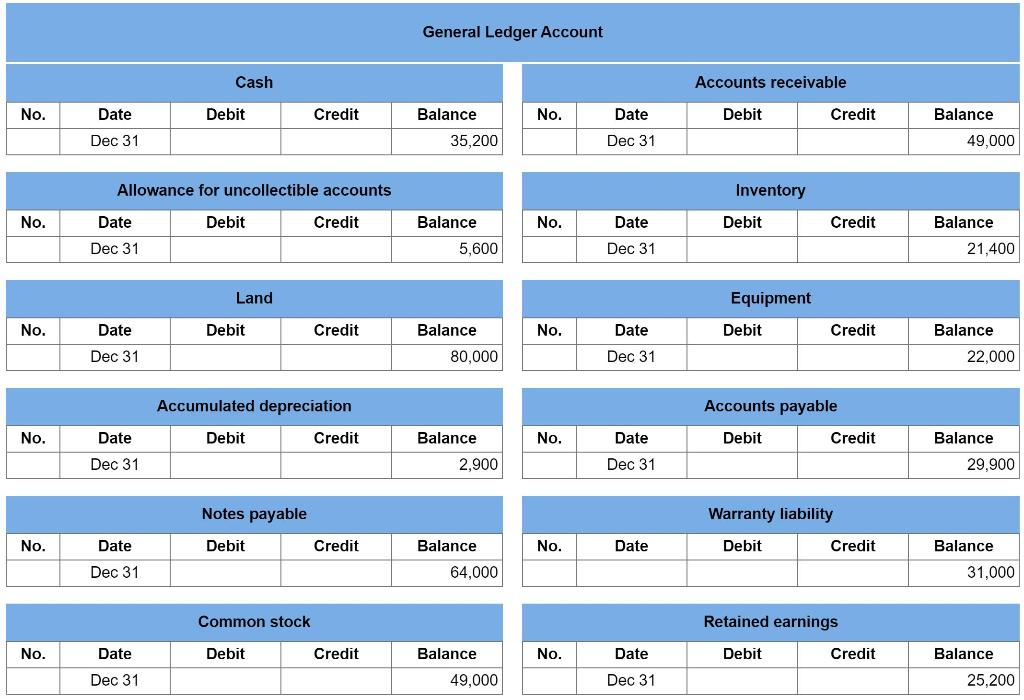
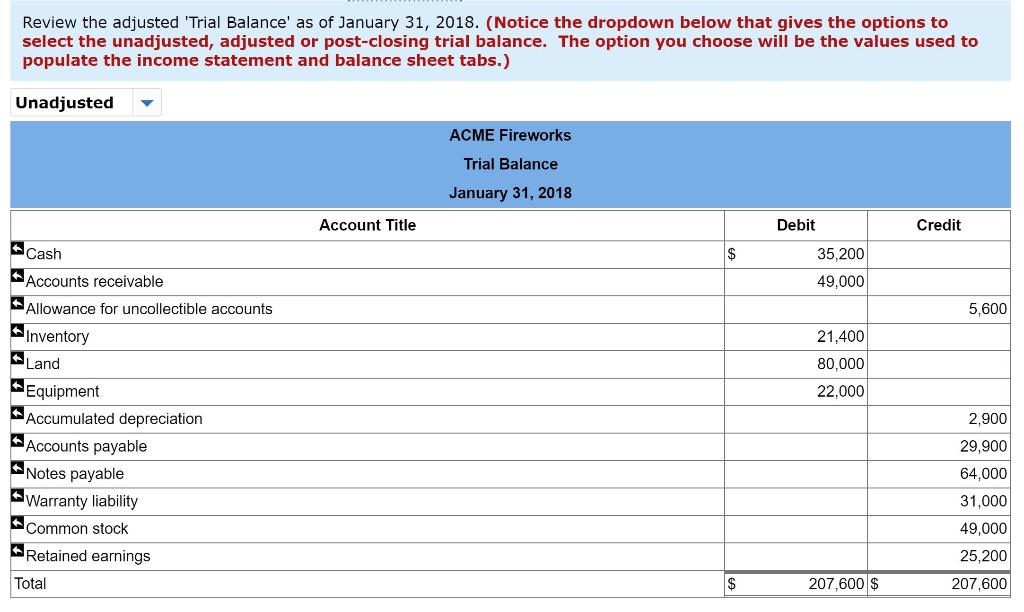
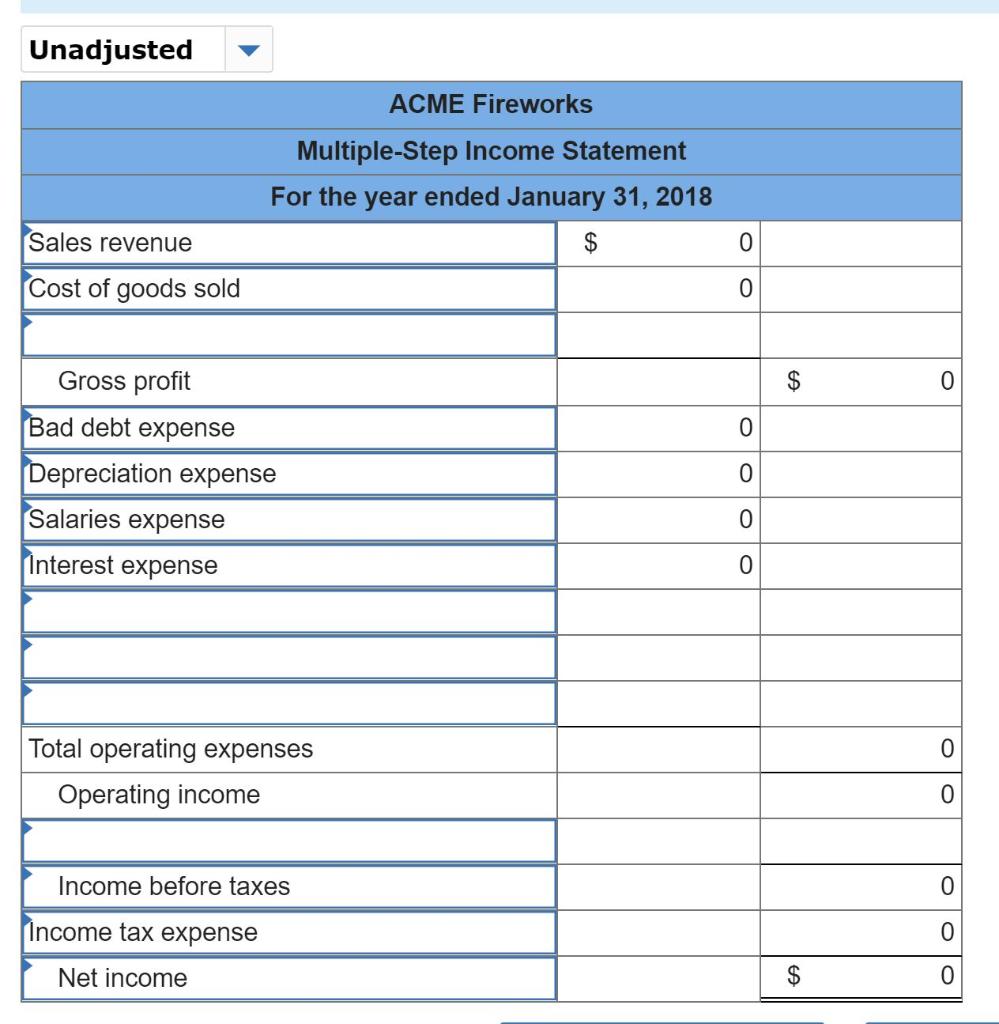
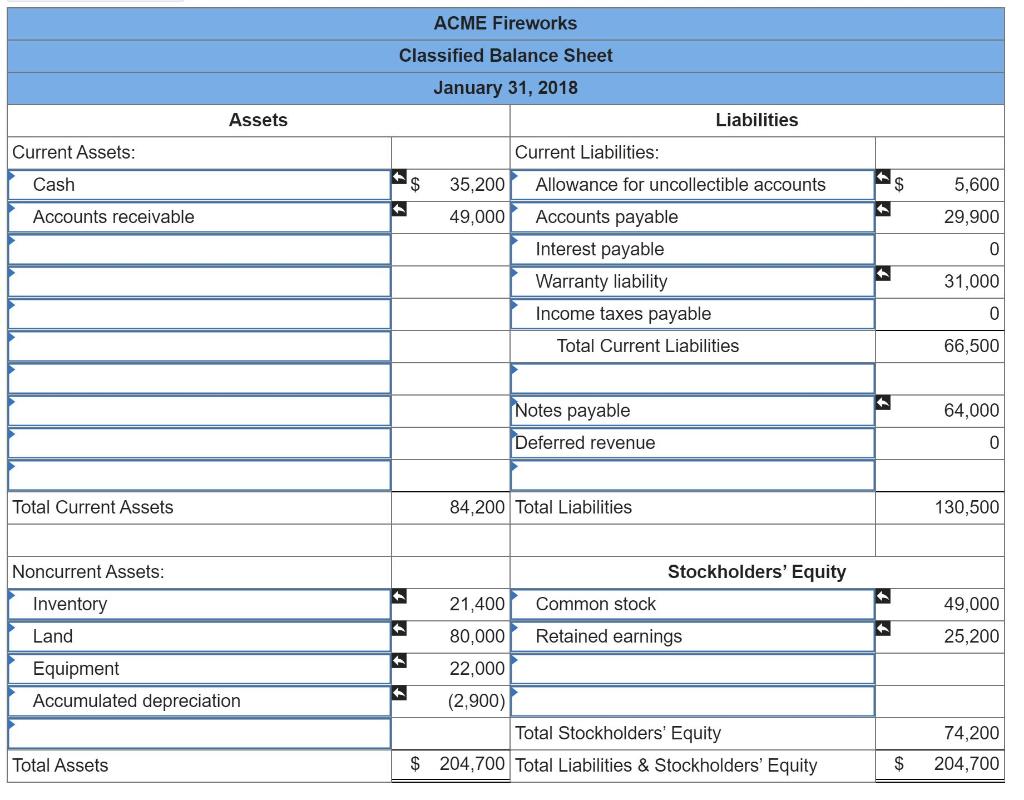
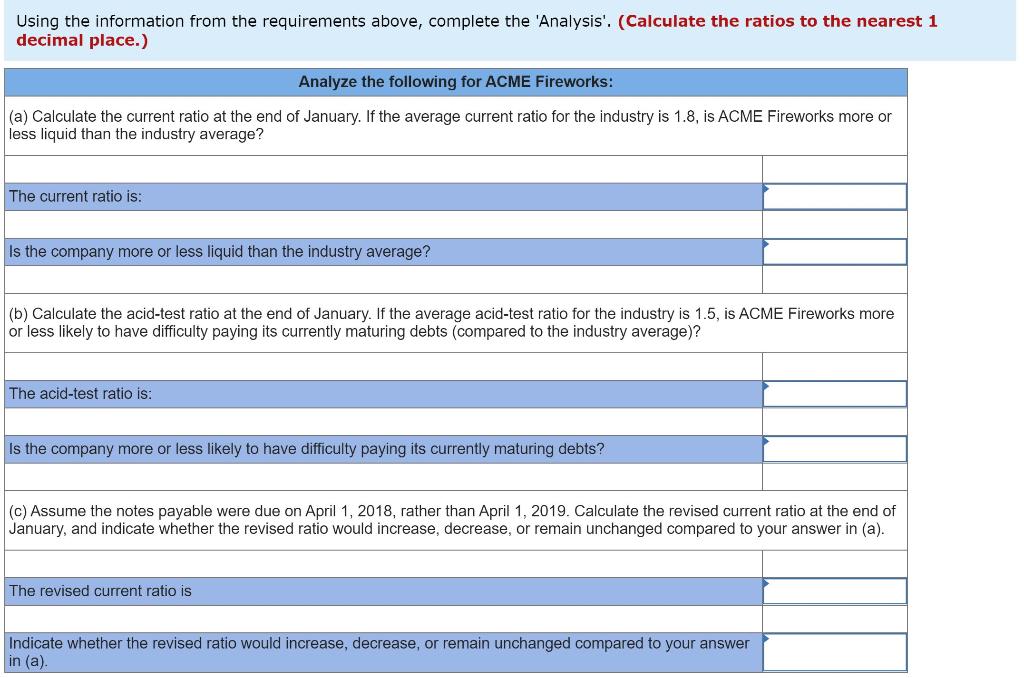
On January 1, 2018, the general ledger of ACME Fireworks includes the following account balances: Credit Debit $ 35,200 49,000 21,400 80,000 Accounts Cash Accounts Receivable Inventory Land Equipment Allowance for Uncollectible Accounts Accumulated Depreciation Accounts Payable Notes Payable (6%, due April 1, 2019) Warranty Liability Common Stock Retained Earnings Totals 22,000 5,600 2,900 29,900 64,000 31,000 49,000 25, 200 $ 207,600 $ 207,600 During January 2018, the following transactions occur: January 2 Sold gift cards totaling $10,800. The cards are redeemable for fireworks set-up services within one year of the purchase date. January 6 Purchase additional inventory on account, $161,000. January 15 Firework sales for the first half of the month total $149,000. All of these sales are on account. The cost of the units sold is $80,800. January 20 ACME paid a warranty claim of $26,000. January 23 Receive $126,800 from customers on accounts receivable. January 25 Pay $104,000 to inventory suppliers on accounts payable. January 28 Write off accounts receivable as uncollectible, $6,200. January 30 Firework sales for the second half of the month total $157,000. Sales include $15,000 for cash and $142,000 on account. The cost of the units sold is $86,500. January 31 Pay cash for monthly salaries, $53,400. The following information is available on January 31, 2018. The following information is available on January 31, 2018. a. Depreciation on the equipment for the month of January is calculated using the straight-line method. At the time the equipment was purchased, the company estimated a residual value of $4,600 and a two-year service life. b. ACME provides a quality assurance warranty on all sales, and estimates the liability associated with the warranty to be 1% of sales revenue. ACME accrues warranty expense on the last day of each month. The warranty liability covers the life of the product and so is classified as non-current. c. During January an appeals court ruled against ACME in a lawsuit involving a customer injury. The customer sued ACME for damages following a firework mishap. ACME now believes it is probable that it will incur a $16,400 loss associated with the claim, but it intends to pursue further appeal and the case could drag on for another couple of years. d. During January a customer sued ACME for damages after inadvertently igniting a Vesuvius Spark Fountain in his backpack. ACME believes the probability of incurring a loss on the claim to be remote. e. At the end of January, $25,000 of accounts receivable are past due, and the company estimates that 30% of these accounts will not be collected. Of the remaining accounts receivable, the company estimates that 3% will not be collected. f. ACME accrued interest expense on notes payable for January. g. ACME accrued income taxes at the end of January are $7,400. h. By the end of January, $4,400 of the gift cards sold on January 2 have been redeemed for fireworks set-up services. Requirement General Journal General Ledger Trial Balance Income Statement Balance Sheet Analysis Record each of the transactions listed above in the 'General Journal' tab (these are shown as items 1-11) assuming a FIFO perpetual inventory system. The transactions on January 15 and January 30 require two entries: one to record sales revenue and one to record cost of goods sold. Review the 'General Ledger' and the 'Trial Balance' tabs to see the effect of the transactions on the account balances. Record adjusting entries on January 31, 2018, in the 'General Journal' tab (these are shown as items 12-19). Record the closing entries in the 'General Journal' tab (these are shown as items 20 and 21). (The company prepares closing entries by closing the appropriate accounts directly to Retained Earnings. If no entry is required for a transaction/event, select "No journal entry required" in the first account field.) Show less View transaction list General Ledger Account Cash Accounts receivable No. Date Debit Credit No. Date Debit Credit Balance 35,200 Balance 49,000 Dec 31 Dec 31 Allowance for uncollectible accounts Inventory No. Debit Credit No. Date Debit Credit Date Dec 31 Balance 5,600 Balance 21,400 Dec 31 Land Equipment No. Date Debit Credit No. Date Debit Credit Balance 80,000 Balance 22.000 Dec 31 Dec 31 Accounts payable Accumulated depreciation Debit Credit No. Date No. Date Debit Credit Balance 2,900 Balance 29,900 Dec 31 Dec 31 Notes payable Warranty liability No. Date Debit Credit No. Date Debit Credit Balance 64,000 Balance 31,000 Dec 31 Common stock Retained earnings Credit No. Date Debit Credit Balance No. Date Debit Balance 25,200 Dec 31 49,000 Dec 31 Unadjusted ACME Fireworks Multiple-Step Income Statement For the year ended January 31, 2018 Sales revenue $ 0 Cost of goods sold 0 Gross profit $ 0 Bad debt expense 0 Depreciation expense 0 Salaries expense 0 Interest expense 0 0 Total operating expenses Operating income 0 Income before taxes 0 Income tax expense 0 Net income $ 0 ACME Fireworks Classified Balance Sheet January 31, 2018 Assets Liabilities Current Assets: Cash $ $ 35,200 49,000 5,600 29,900 Accounts receivable Current Liabilities: Allowance for uncollectible accounts Accounts payable Interest payable Warranty liability Income taxes payable Total Current Liabilities 0 31,000 0 66,500 Notes payable 64,000 Deferred revenue 0 Total Current Assets 84,200 Total Liabilities 130,500 Noncurrent Assets: Stockholders' Equity Common stock 21,400 80,000 22,000 49,000 25,200 Inventory Land Equipment Accumulated depreciation Retained earnings (2,900) Total Stockholders' Equity $ 204,700 Total Liabilities & Stockholders' Equity 74,200 204,700 Total Assets $ Using the information from the requirements above, complete the 'Analysis'. (Calculate the ratios to the nearest 1 decimal place.) Analyze the following for ACME Fireworks: (a) Calculate the current ratio at the end of January. If the average current ratio for the industry is 1.8, is ACME Fireworks more or less liquid than the industry average? The current ratio is: Is the company more or less liquid than the industry average? (b) Calculate the acid-test ratio at the end of January. If the average acid-test ratio for the industry is 1.5, is ACME Fireworks more or less likely to have difficulty paying its currently maturing debts (compared to the industry average)? The acid-test ratio is: Is the company more or less likely to have difficulty paying its currently maturing debts? (c) Assume the notes payable were due on April 1, 2018, rather than April 1, 2019. Calculate the revised current ratio at the end of January, and indicate whether the revised ratio would increase, decrease, or remain unchanged compared to your answer in (a). The revised current ratio is Indicate whether the revised ratio would increase, decrease, or remain unchanged compared to your answer in (a)













